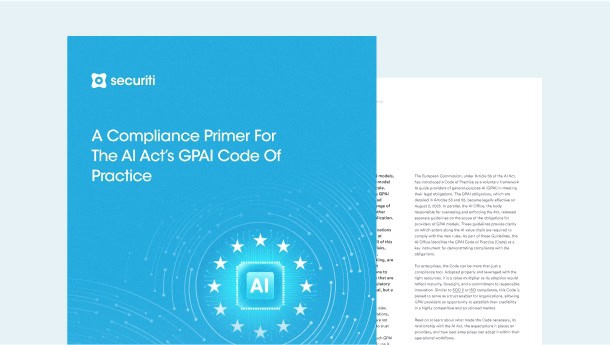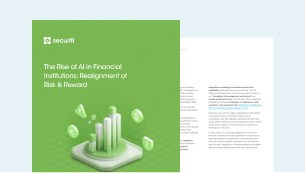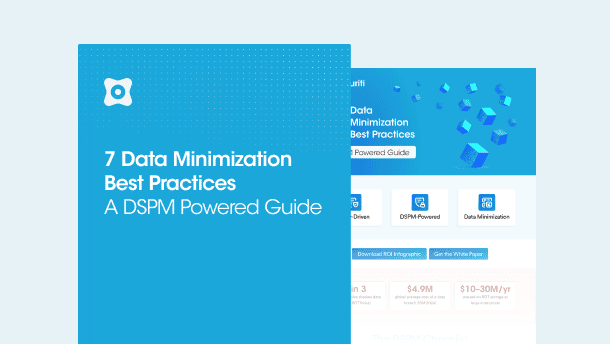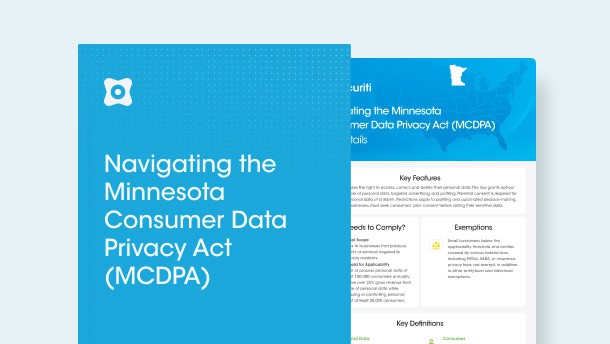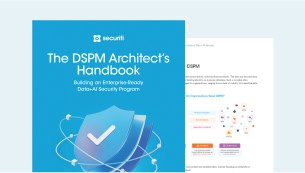As financial organizations continue to operate in the digital age, data privacy and security become more crucial than ever before. Data streaming, which is vital for sharing data across key lines of business, poses a challenge as sensitive information can flow downstream to unintended recipients. However, with the increasing adoption of data streaming services, financial organizations need to accelerate the delivery of new applications, insights, and customer experiences while ensuring that appropriate processes and controls are in place to safeguard sensitive information.
Managing sensitive data becomes a critical challenge as the financial industry evolves and adopts new technologies. With the rise of complex ecosystems and the increasing amount of sensitive data generated, financial organizations must prioritize the security of their data without hindering their ability to extract valuable insights. Striking a balance between protecting sensitive data and enabling accessibility is essential for maintaining trust with customers and staying ahead in the competitive market.
As organizations increasingly rely on data streaming to keep pace with digital transformation, they must also ensure the security and privacy of sensitive information that moves downstream. It's essential to establish strong security measures to protect against potential breaches and cyber attacks, which requires gaining visibility into how sensitive data flows through the organization's data ecosystem.
Three Persistent Sensitive Data Challenges
As financial organizations adopt data streaming to accelerate their operations, they face unique challenges related to sensitive data. While tools for managing and monitoring data at rest are common, they often fall short in managing data in motion. Financial institutions must address three key challenges to mitigate the risks associated with streaming data and ensure data security.
#1 Data Sprawl
In the modern data landscape, data is ubiquitous and rapidly growing, leading to a phenomenon known as data sprawl. This can result in sensitive data being stored in uncontrolled locations, such as newly created topics without proper traceability or ownership. Unmitigated data sprawl increases the risk of data exposure, potentially damaging a financial organization's reputation and leading to regulatory non-compliance penalties that can adversely affect the bottom line
To address the challenge of data sprawl, financial organizations need to adopt tools and processes that allow for effective data governance in streaming environments. Streaming services like Apache Kafka, Confluent Kafka, and Google Pub/Sub are increasingly popular options that live in cloud environments and facilitate the movement of data between multiple data stores via buses.
When sensitive data is published to a streaming service, it can quickly become widely distributed across multiple systems. Anyone who subscribes to a particular topic will have access to all of the data contained within, which can then be imported or even republished by other systems. This means that if sensitive data is present within a stream, it becomes even more vulnerable to exposure and compromise if any downstream subscriber or system mishandles it.
Financial organizations require a solution that can quickly scan, detect and classify sensitive data, while also applying appropriate remediation or masking policies to protect it. To control the impact of data sprawl, organizations must first understand where sensitive data resides, how much exists, and where it may be accessed. Only then can organizations effectively limit downstream publication of sensitive data and implement the necessary safeguards to protect against potential data breaches and regulatory non-compliance.
#2 Process controls
Complying with global and local regulatory requirements such as the General Data Protection Regulation (GDPR) and the California Privacy Rights Act of 2020 (CPRA) is critical for financial organizations. However, this can be a daunting task without visibility into what sensitive data exists, where it resides, and who can access it. The complexity of data obligations and responsibilities means that process controls must be in place to ensure compliance and avoid potential legal and financial penalties.
Due to the complexity of streaming architectures, financial organizations often lack visibility into whether sensitive data is being sent downstream and in what form. A multitude of consumers can subscribe to a single topic, and if sensitive data is mistakenly written to a topic, it can spread quickly, exponentially increasing the risk of data breaches and non-compliance with regulatory requirements.
Despite the ability of streaming solutions to specify data access roles, it remains a challenge for administrators to set up policies for subscriber access based on data sensitivity. This is due to the difficulty in determining whether a topic contains sensitive data. As a result, financial organizations may be unknowingly exposing sensitive data to unauthorized parties, putting themselves at risk of data breaches and regulatory non-compliance.
By providing the ability to map subscriber access policies based on data sensitivity, solutions can enable more precise classification and tagging of sensitive data. This allows organizations to selectively choose which topics downstream consumers can subscribe to and what data they may consume within each topic. With these capabilities, administrators can establish policies that reflect the sensitivity of the data and more effectively mitigate the risk of sensitive data exposure.
#3 Balancing Data Exposure with Business Use
As financial organizations strive to leverage data downstream for business benefits, it's important to balance data exposure with risk management. To achieve this, organizations need to identify and classify sensitive data in streaming environments, assess its business value, and determine appropriate controls to mitigate the risk of data exposure. This requires a comprehensive understanding of data flows and potential vulnerabilities, as well as a flexible and agile approach to data management that can quickly adapt to changing business needs and evolving regulatory requirements. By balancing data exposure with business use, financial organizations can maximize the value of their data assets while minimizing the risk of costly data breaches and regulatory non-compliance.
Streaming solutions lack the ability to dynamically modify sensitive data values in transit to limit exposure, leaving financial organizations facing a difficult trade-off between leveraging data for business insights and protecting sensitive information. While failing to protect sensitive data can lead to significant risk, overly restricting data access can limit its usefulness and business value.
To address this challenge, financial organizations can adopt advanced data governance solutions that effectively mask sensitive data before it's pushed downstream to subscribing systems. By applying masking policies automatically using data tags that specify which data should be masked, organizations can still leverage data for analytics to drive innovation without exposing sensitive data values. This allows organizations to strike a balance between data exposure and business use, ensuring that sensitive data is protected while still allowing it to be utilized for key business insights.
Streaming Data is a Novel Threat
Financial organizations are facing a new challenge in protecting their sensitive data due to the rise of cloud environments and the increasing volume of data streams. Unlike traditional on-premises environments that were more confined, data streams in the cloud can be difficult to control and protect. This introduces a novel threat that requires new approaches to data protection to ensure regulatory compliance and mitigate risks.
Traditionally, the finance industry has placed great emphasis on scanning and monitoring data at rest, with the goal of identifying sensitive data within the overall environment. However, the unique architecture and high velocity of real-time streams pose a significant challenge for enterprises when it comes to matching batch data at rest. As a result, many organizations struggle to apply the same level of data protection to streaming data as they do to data at rest, leaving them vulnerable to new and novel threats.
Due to the unique challenges posed by streaming data, defending and securing sensitive data in transit has been a major obstacle. It's a difficult task that often does not align with established data governance policies.
In a traditional data flow:
- Data originates from an application that sits on top of a database
- The data then flows through an Extract, Transform, and Load (ETL) tool.
- Finally, the data is pushed into a data warehouse or data marts where it is stored for later use.
The traditional flow of sensitive data is confined to a limited number of infrastructure components, and access to the data movement infrastructure is tightly controlled.
It becomes exponentially more challenging to scan data within a cloud streaming environment with a high volume of data moving at high velocity. Unlike traditional data flow, where sensitive data is limited to a few infrastructure pieces, cloud streaming involves multiple origination points and destinations. As a result, a financial organization may need to scan data across ten different systems, increasing the likelihood of sensitive data ending up in unintended destinations. With multiple downstream subscribers, the probability of data exposure increases significantly.
In a hyperscale multi-cloud environment, data is constantly moving between public and private clouds, being utilized by various systems generating and distributing streaming data. With the consumption and publication of streaming data by numerous downstream systems, the original publisher loses sight of how the data is ultimately utilized, leaving the possibility of sensitive data being exposed to unintended destinations.
Financial organizations need an AI-driven solution that can automate the identification of sensitive data to address this challenge. By centralizing data scanning at the messaging layer, data privacy, security, and governance teams can effectively scan and control sensitive data. This approach prevents unauthorized distribution of sensitive data in real-time streams, and enables companies to implement a proactive approach to privacy, security, and compliance.
Centralized Data Architecture for Siloed Environments
Financial organizations can now consolidate their data security and governance models to cover both batch and streaming data, providing an all-encompassing solution to their data protection needs.
Securiti provides stakeholders across the enterprise with real-time visibility and control over sensitive data flowing through popular cloud streaming platforms, so financial companies can:
- Find all their sensitive data
Financial organizations can have the flexibility to scan data from a central control point before it proliferates to locations that are difficult or costly to scan, as well as in downstream subscribed systems.
- Manage all their sensitive data
Robust role-based permissions help control access to sensitive data within a streaming environment, while advanced masking capabilities allow teams to leverage essential data for maximum business value without exposing sensitive information to unnecessary risk.
- Ensure compliance
Securiti’s scalable, enterprise-grade architecture also includes a host of enhanced compliance features designed to help any financial organization meet today’s complex and evolving data security, privacy, governance, and sovereignty demands.
Protect Sensitive Data in Financial Organizations Streaming Environments with Securiti
In the financial industry, every organization that utilizes streaming environments requires a solution that can effectively manage data in motion and provide insights into sensitive data. Without the proper tools and strategies in place, financial organizations are at risk of exposing sensitive data, which can result in significant financial and reputational losses.
Securiti’s Data Flow Intelligence & Governance solves today’s most challenging data problems by providing a comprehensive solution for holistic sensitive data discovery, scanning, administration, and masking of data in streams.




































